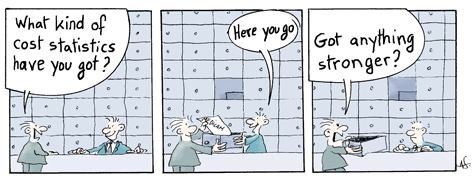
Since 2001, France's national health insurance system has been publishing a yearly report of the amounts and the volume of reimbursements, broken down according to drugs' CIP codes (a) (1 to 4).
This annual update is welcome. But it is a shame that the 2006 report, published in mid-2007, only covers one section of the insurance system (13.8 billion euros reimbursed, out of a total of 20.3 billion for the system as a whole). Above all, the absence of a means for ranking drugs according to the INN (international nonproprietary name) prevents any kind of useful classification of drugs according to the active ingredient(s) they contain. Drugs dispensed to outpatients by hospital pharmacies were omitted (4). Does the national health system really want this data to be usable, and to raise awareness about drug choices?
While very cautious, the system's comments about the 2006 report nonetheless highlight the "particularly high cost of new drugs", which results in a discrepancy between ranking by volume and by total sales (4).
Drugs that cost more than 15 euros per package represent only 16.5% of the volume of drugs reimbursed in 2006, but 67.3% of total cost (65% in 2005) (4).
Clopidogrel is still in first place with more than 400 million euros spent on reimbursement, an increase of more than 12% (4). Esomeprazole rose by 22% over 2005 and moved from fifth to fourth place. Omeprazole (all brand names) still ranks above esomeprazone in terms of total amounts reimbursed, but is declining rapidly (-15% between 2005 qnd 2006) (4). Atorvastatin, the number one statin in terms of both sales and volume, is stable and rising (in second place after clopidogrel in terms of reimbursement costs, while pravastatin and simvastatin are noticeably declining (-18% and -23% in reimbursement costs between 2005 and 2006, due to decreases in price) (b) (4).
The health insurance system certainly has its work cut out, if it wants to encourage the use of equally effective and safe lower-priced drugs.
©Prescrire 2007
Source: "Assurance maladie: le choc du prix des nouveaux médicaments" Rev Prescrire 2007; 27 (288): 775.
Notes:
a- For more on the CIP Code, see la revue Prescrire n° 286 page 638.
b- Where more is at stake than simply price, one would expect the national health insurance system to take a more active role: for instance, in defending the system in France's Aude region, which was taken to court by the pharmaceutical company Astra Zeneca. The company contends that the regional authority presented rosuvastatin in an "obviously unbalanced" manner in one of its publications (ref 5).
References:
1- Prescrire Rédaction "La dépense pharmaceutique en 2000 selon Medicam" Rev Prescrire 2001; 21 (223): 855-856.
2- Prescrire Rédaction "Médicaments remboursés en France: base de données 2002-2005" Rev Prescrire 2006; 26 (275): 621.
3- Assurance maladie - caisse nationale "Médicaments remboursés par le régime général au cours des années 2002 à 2006". www.ameli.fr accessed 18 June 2007.
4- Assurance maladie - caisse nationale "Médicaments remboursés: analyse des principales évolutions de l'année 2006". www.ameli.fr accessed 18 June 2007: 13 pages.
5- Mamou Y "Qui peut informer les médecins ?" Le Monde, 1 June 2007: 1 page.
